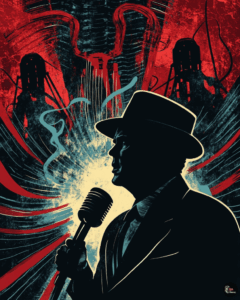📻 The Night America Believed Martians Were Here
The Orson Welles War of the Worlds radio panic began on October 30, 1938, when listeners tuning into CBS heard what sounded like breaking news: reports of a Martian invasion hitting New Jersey and advancing on Manhattan. Presented in compelling newscast form, this broadcast triggered real concern, prompting frantic calls to police and emergency services—even though it was, as listeners later assured, entirely fictional onthisday.com+7fasrlogo175.weebly.com+7sickhistory.com+7.
🎙 How A Radio Play Became Cultural Phenomenon
-
Innovative format: The show mimicked a live newscast—complete with “on‑the‑ground” reports, sound effects, and pauses for “commercials”—blurring fiction and reality .
-
Welles’ mastery: At just 23, Orson Welles delivered the broadcast with serious gravitas, creating authenticity that even skilled reporters would’ve envied music.apple.com+4sickhistory.com+4fasrlogo175.weebly.com+4.
-
Myth vs. reality: Though newspapers reported national hysteria, later research reveals the panic was much smaller—a handful of frightened listeners rather than nationwide chaos fasrlogo175.weebly.com+1sickhistory.com+1.

📚 Why It Matters Today in the Age of Misinformation
-
Trust in media: The incident underscores how storytelling—even unintentional—can sway public perception and shape behavior. As media platforms evolve, so does the importance of clearly distinguishing fact from fiction.
-
Media literacy: The broadcast highlights the critical need for questioning information sources. What if listeners had paused to verify the story? Today’s audiences must maintain this cautious mindset.
-
PR & communication lessons: Modern communicators can’t just push facts—they must actively engage audiences, asking questions and promoting informed dialogue to combat misinformation. Not unsurprisingly, trust still reigns supreme over mere attention—something our guest Mark Burey emphasizes in the podcast.
🧠 Lessons for PR & Media Professionals
-
Format is powerful – Presentation can outweigh content. Use formats thoughtfully to ensure clarity and context.
-
Build trust, not just eyeballs – Media professionals must prioritize credibility over sensational appeal.
-
Foster media literacy – Encourage and train audiences to question, reflect, and verify. Combat misinformation not by lecturing but by engaging.
Final Thoughts
The Orson Welles War of the Worlds radio panic remains a timeless case study in media impact. It reveals how easily perception can be shaped—and why communicators must wield their craft responsibly. We all share a duty: to build trust and equip audiences with the tools to discern truth.
Listen to the full episode here: Media Literacy in the Age of Misinformation from the Stories and Strategies Podcast

